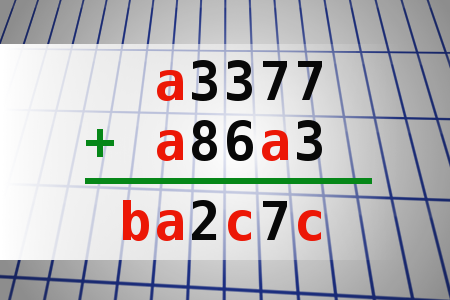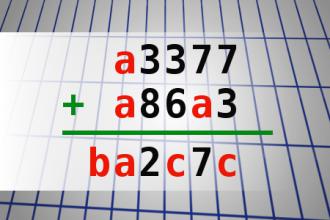Find number abc
If a3377 + a86a3 = ba2c7c find number abc. Multiple solutions may exist.Correct answers: 1
#brainteasers #math

What did the seal say when it swam into a concrete wall?
Q: What did the seal say when it swam into a concrete wall?
A: "Dam!"
Q: What does a seal get from sitting on the ice too long at the zoo?
A: Polaroids!
Q: What did the baby seal say when it was late?
A: "I would have been here sooner, but my iceberg hit a ship."
Q: What's a balanced diet for a polar bear?
A: A seal in each paw!

